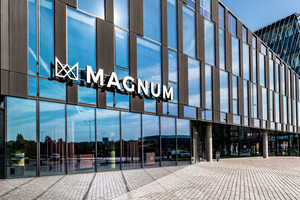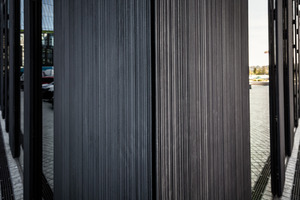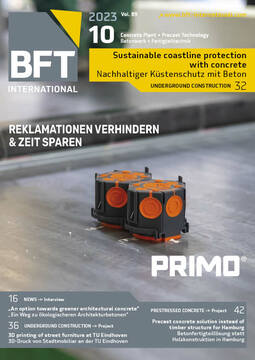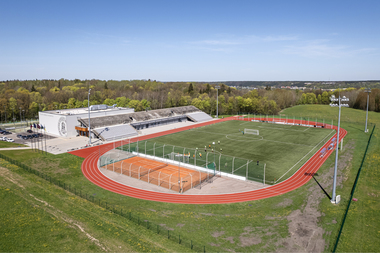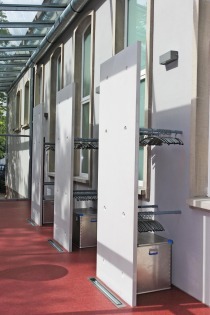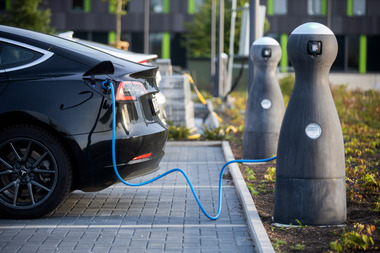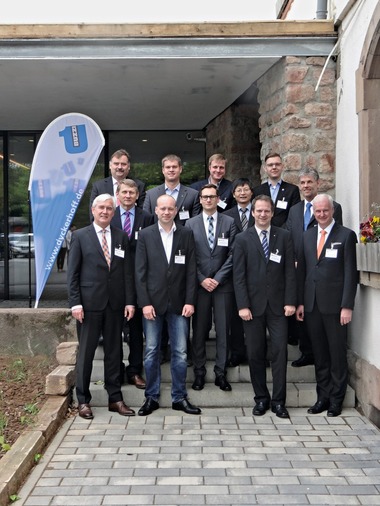Modern sculptural design with UHPC in Kaunas, Lithuania
In Kaunas, the second-largest city in Lithuania, directly situated on the Neman river, a highly modern, sustainable building was implemented – with the special binding agent Nanodur from Dyckerhoff. Its name: Magnum Business Center.
The building was conceived by the architects UAB “Archas” as “City in the City”. It consists of two towers, twelve and eight stories high, with around 1,700 offices. The towers are interconnected by commercial areas in the lower stories, and there are several roof terraces on the connecting bridge. In addition, there is a bicycle parking facility with showers and changing rooms, charging stations for electric cars, a two-story underground garage as well as parking facilities on the street. A flexible conference room suitable for various events makes the Magnum Business Center a location with universal appeal. The entire building complex is powered by a controlled electrical system with renewable energy sources, which selects the most suitable micro-climate for the different areas by automatically adjusting the heat and the most economical LED illumination. With its visual appearance, the Magnum Business Center fits perfectly into the existing urban setting and wonderfully integrates into the surrounding urban context.
For the façade (approx. 2,600 m²) and the interior space (approx. 300 m²), individually structured panels of ultra-high-performance concrete (UHPC) with organic impression were used. On the exterior, the panels are combined with a radiant glass façade and, in the interior, with cast-in-situ architectural concrete elements. The panels were manufactured by Hibeton, a local company, specialized in the production of precast concrete elements of ultra-high-performance fiber concrete for façades, interior spaces and 3D concrete elements.
Low CO2 footprint of the UHPC façades
The façade elements measure up to 1.50 x 4.20 m. Structured panels of up to 1.40 x 3.80 m were installed inside. All elements, inside and outside, have a maximum thickness of 28 mm and a structural depth of 4 mm. Especially structured formwork specifically made for the project was designed and manufactured of polypropylene panels, using CNC technology. In addition to sand (maximum particle size 0-2 mm), pigments for coloring and a range of other admixtures, the special binding agent Dyckerhoff Nanodur Compound 5941 weiss was used. This binder premix is outstandingly well suited for manufacturing slender concrete elements with distinctive individual shapes that satisfy strict requirements for stability.
The panel surfaces were additionally treated with a lithium and potassium silicate mix with black pigments to achieve a more intensive color. Instead of a water-repellent coating – as used for the façade panels – the panels in the interior were coated with three layers of a transparent two-component water-based polyurethane.
Since with UHPC very slender element thicknesses are possible – in this case, only 28 mm – the CO2 footprint of UHPC façades is markedly lower than that of façades of normal concrete. The low weight of the panels also typically reduces CO2-emissions for transport and crane work. The manufacturer Hibeton explains: “Our motto and our philosophy are aesthetic excellence. This means manufacturing high-value, long-lasting, durable products with long service life – and UHPC is the perfect material. Accordingly, UHPC contributes to making this building sustainable and environmentally friendly.” This is in no small measure owing to the fact that the ready-mixed concrete for the building – in line with the concept of urban mining – was partly produced with concrete rubble from the demolition of an uncompleted hotel that had stood at the same site for over 30 years. The Magnum Business Center is, all in all, one of the largest business centers in Kaunas with energy efficiency class A+ and offers – especially in regard to its sustainable orientation – modern technical solutions and innovations.
The German consultancy and engineering firm Durcrete has been a technology partner of Dyckerhoff for many years and is highly experienced in the application of UHPC with Nanodur Compound 5941. It supported the manufacturer in all construction phases.
CONTACT
Dyckerhoff GmbH
Biebricher Straße 68
65203 Wiesbaden/Germany
+49 611 676-0

